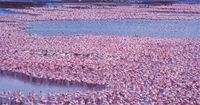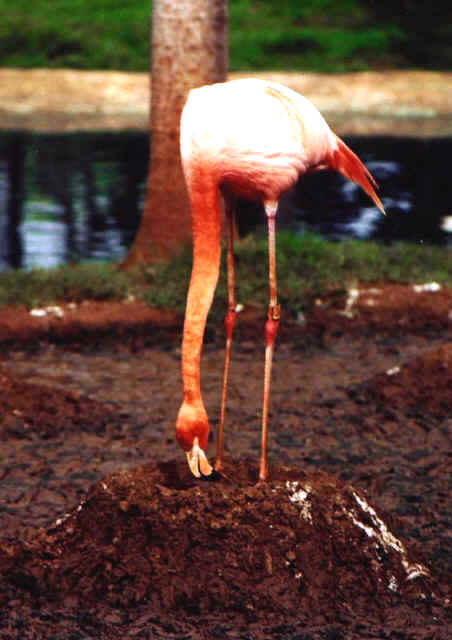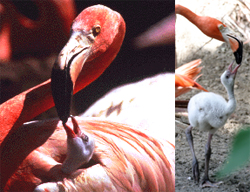
Reproduction

Reproduction

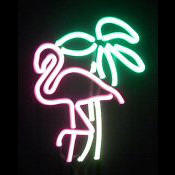
Caribbean Flamingos don't have a particular breeding season, it usually varies among populations. However rainfall can be a cue for the breeding season to start, so around the spring and summer months is usually when the breeding occurs. Since flamingos are social birds, they live together in colonies that host thousands of other flamingos. The reason for is because large colonies allow for successful breeding, but before flamingos can start reproducing, they need to find a mate. To attract mates flamingos will show elaborate displays, both male and female birds do this. They will even pretend that they are making a nest or pretend to feed to show that they will make a good parent.
Flamingos are able to breed upon reaching the age of 3-6
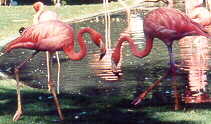
Some Displays that the Flamingos Show to Attract a Mate
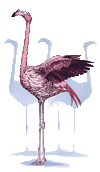
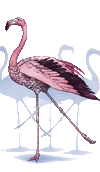
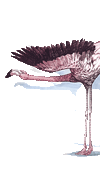
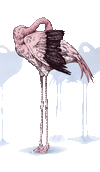
Once the Caribbean flamingo has found the proper mate, they will leave the colony to start building a nest. In order to do so they collect mud in their beak and deposit it to the edge of their nesting site, which is in the water near the shoreline. Then they use their webbed feet to press the mud down near the top to create a bowl for the egg to lay in. These nests are anywhere from 5-18 inches tall. This tall nest protects against rising waters and the hot alkaline ground. The temperature difference from the top of the nest to the ground can be a 20 to 30 degree difference! If no mud is available the flamingo will improvise by gathering whatever it can find in its surroundings. During the time that the nest is being built, the male and female bird will mate periodically. They reproduce by means of sexual reproduction. Birds only have one opening for the genital, intestinal, and urinary tract called the cloaca, so reproduction between birds involve a "cloaca kiss" which lasts only a few seconds. This usually occurs when the female is feeding and the male bird sneaks up behind her. Once copulation has occurred and the nest is finished, the female flamingo will lay a a single white oval shaped egg in the top of her nest. The egg is roughly 9 centimeters long and 5 centimeters in diameter. The male and female flamingos will take turns incubating the egg, and once and awhile the flamingo will stand up and turn the egg to make sure the developing flamingo doesn't get stuck. After the 28-32 day incubation period a baby flamingo covered in whitish grey down feathers will break through the egg using a sharp point on its beak called an egg tooth.
Wing & Leg Stretch: When flamingos stretch one of their wings and the opposing leg at the same time.
Inverted Wing Salute: When flamingos bend over and stretch their neck while inverting their wings.
Twist Preen: When flamingos turn around to groom themselves.
Yes of course. Flamingos are excellent parents from day one. Within an hour of hatching the chick is dry and fed with regurgitated food from both of its parents called crop milk. Chicks are able to swim within 3-4 hours of hatching and fly at about 75-78 days. They are able to feed on their own at about day 40 because the beak is curved and the lamellae are developed enough to allow for filter feeding. The parents will continue to incubate the chick and feed it until the chick is three months of age.
.
-Mud or other proper building material to make a high rise nest.
-Rainfall, since it is usually the signal to start the breeding season.
-A large population because it facilitates successful breeding (i.e. genetic variance)
-Breeding Displays
